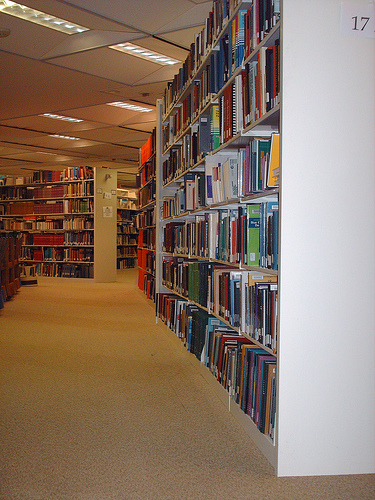Library Media Specialist: Library Collection Development

What is Collection Development?
Library collection development is the continual process of working towards meeting the information needs of the community in which you serve. Collections are developed by purchasing or acquiring materials over a period of time, and using information retrieved from the community to assess the information needs of the library's users. In addition to acquiring materials, library collection development includes the creation of policies to guide material selection, replacement of worn or lost materials, weeding of materials no longer needed in the collection, and planning for new materials to add to the collection.
Hubs for Librarians
- How to Teach Library Skills
Librarians today have many roles to fill in the school setting. Learn how to follow a code of ethics while teaching students and patrons to access information effectively. - How to Improve your School’s Library Media Center
A library media center should be a place full of energy and excitement. It should offer a large amount of current and relevant resources, expert guidance, and a welcoming and comfortable environment. - Lessons for Elementary Library Media Specialist
Today students are expected to be technology proficient. Librarians have a challenging task, teaching within the framework of their state's standards, and teaching students to be competent in accessing information effectively. This article gives some
The 6 Elements of Collection Development
Collection development is one of the primary functions of a library. In order to effectively develop, maintain, and improve upon a school library media collection, the Library Media Specialist must be knowledgeable about the importance of the six elements of collection development and how to implement each element. These elements of collection development are: community analysis, policies, selection, acquisition, weeding, and evaluation. The librarian’s goals are to provide the community with materials that they want to use as well as materials that will support and enhance the school curriculum and learning objectives. Providing professional materials for the staff is essential as well, and choosing materials that are up-to-date and relevant is important.
Understanding the community population is important to establishing an effective collection. Being aware of the changing needs within a school population, and adapting the collection to meet those needs by adapting accordingly is a must. Knowing which areas of the collection need to be weeded goes hand-in-hand with the needs of the community. Keeping abreast of the school community is an on-going process that aids in improving and adding to the collection.
Establishing a policy for selection, acquisition, and evaluation is a large part of the collection development process. These policies are developed to support and justify the development of the library collection. Within the policy, there must be a list of sources that are deemed appropriate for selection, guidelines on when and which areas of the collection should be weeded, and a statement addressing intellectual freedom. Reevaluation of these policies should be done yearly to maintain the accuracy and dependability of the collection. The Library Media Specialist is responsible for developing, maintaining, and improving upon the collection for the benefit of the learning community. By developing positive relationships with the community and communicating with staff and students, the librarian will be better able to meet the needs of the students, staff, and community. The selection process describes how items are selected, using criteria. It also explains where the items will be acquired.
Collection development also includes the weeding of material on a regular basis. It is necessary to remove items from the collection that are no longer needed, because they are out-of-date or not relevant, in poor condition, or no longer used or needed. A weeding schedule should be included due to limited time, budget and space available. Weeding should be a process, carefully described in the policy manual. The Library Media Specialist should create and maintain a weeding policy that includes criteria and procedures.
Evaluating the items in the media center is essential to creating and maintaining a collection that will be interesting and useful to its community. The learning community should be able to access and use the collection regularly, finding it relevant and helpful in reinforcing current curriculum objectives. Developing an evaluation process after items are added to the collection is an important step in maintaining a useful collection. This process should include having staff and students fill out evaluation forms or responding to surveys.
By effectively implementing the six elements of collection development, the librarian can ensure that the school learning community will be provided the best collection possible. They will be able to access quality materials that are interesting, useful, up-to-date, and relevant. As a result, its users will want to access the materials and reading will be promoted. Information literacy will be achieved with the successful interaction between the learning community, staff, and librarian. Collection development is the core of what makes a library successful.







